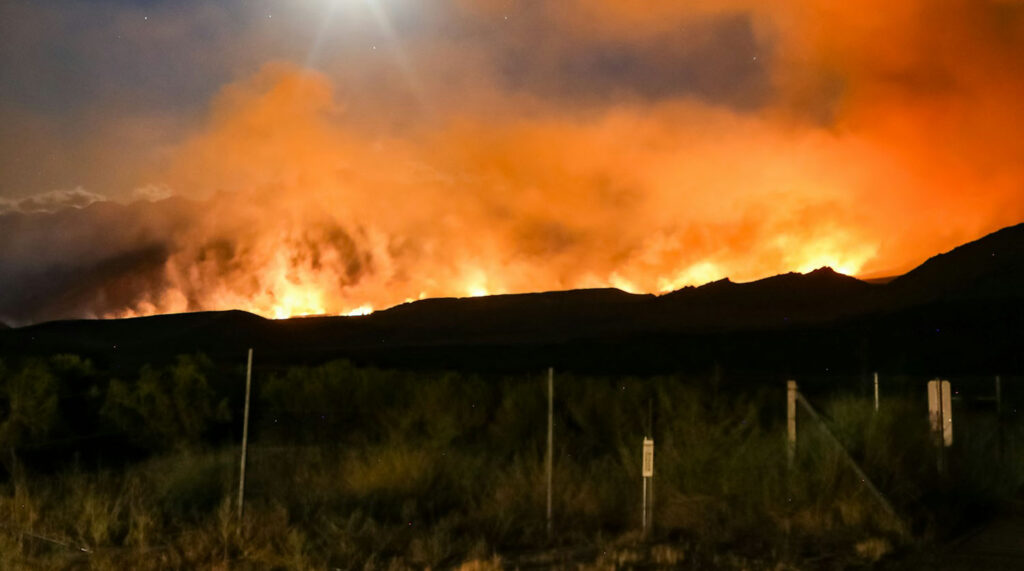Senate Examines Wildland Fire-Mitigation Recommendations
On March 12, 2024, the Senate Committee on Energy and Natural Resources held a hearing to discuss findings and recommendations for the Wildland and Fire Mitigation and Management Commission. This hearing provided members of Congress and witnesses the opportunity to discuss new and potential policies to address the nation’s wildfire crisis.

TCIA has had a growing interest in wildfire-mitigation and -management strategies, and used the hearing as an opportunity to submit a letter for the record to provide its thoughts on ways Congress can improve vegetation management as it relates to wildfires.
The Wildland Fire Mitigation and Management Commission and Report
In 2021, Congress passed the Bipartisan Infrastructure Law, which mandated the creation of a commission responsible for preparing a report of policy recommendations designed to improve federal forest and wildlife management. This commission, known as the Wildland Fire Mitigation and Management Commission, consisted of 50 members and was led by the Federal Emergency Management Agency (FEMA), the U.S. Department of Agriculture (USDA) and the Department of the Interior (DOI).
In September 2023, the commission released its final report, which included 148 recommendations to prevent severe wildfires and restore forests. These recommendations included salary increases for federal firefighters, increased vegetation management and the inclusion of liability protections in various circumstances, such as forest-fire compacts.
While many of the commission’s recommendations did not apply to the tree care industry, two recommendations could have an impact on utility vegetation management, which TCIA has been actively engaged in. Specifically, Recommendation 7 advises Congress to establish federal standards for wildland fire-mitigation plans in the electric-utility sector, while Recommendation 8 instructs Congress to engage with relevant federal agencies to facilitate the adoption of uniform regulations and procedures for federal rights-of-way (ROWs), and to create a guide for states to adopt similar policies.
Committee discussions
During the committee’s discussions on the commission’s findings, Committee Chair Joe Manchin (D-WV) inquired about the DOI’s progress in implementing a congressional directive to streamline regulations for managing hazard trees and transmission lines in ROWs. In response, Joan Mooney, the department’s principal deputy assistant secretary of policy, management and budget, stated that the directive was a high priority and that DOI would collaborate with utility companies to mitigate risk.
In addition to discussing hazard trees and transmission lines, Senator Manchin expressed concern about the lingering presence of hazard trees on landscapes following wildfires. He asked whether post-fire timber harvesting had been considered as a solution that mitigates risks and promotes new growth.
In response, Kelly Norris, a forester at the Wyoming State Forestry Division, noted that Wyoming’s swift timber harvesting after a recent wildfire had saved the short-lived ponderosa pine that inhabited the area.
On a similar note, Cody Desautel, who serves as the executive director of confederated tribes at the Colville Reservation in the state of Washington, stated Colville’s restoration strategy included salvage logging – a process of retrieving profitable wood from forest areas following a natural disaster. He noted that the superintendent of the Bureau of Indian Affairs had reduced the bureaucratic hurdles associated with salvage logging by including it within its forest-management plan.
Senator Angus King (I-ME) asked Norris whether the lack of cutting, pre-commercial thinning and climate change had exacerbated the risk of forest fires. In response, Norris stated that dense forests were full of fuel, contributing to the wildfire crises.
TCIA’s involvement
On March 26, 2024, TCIA submitted a letter for the hearing’s record highlighting that America lacked a standard of care for the pre-inspection of hazard trees within vegetation-management plans. To enhance the quality of utility vegetation management and reduce risks to power lines, TCIA wrote seeking the committee’s support in developing a standard of care for utility vegetation management. TCIA emphasized that, “Establishing a national standard of care would yield numerous benefits, including more effective wildfire prevention, standardized risk-assessment practices across states and improved accessibility and affordability of insurance for contractors.”
Conclusion
As members of Congress assess America’s wildfire challenges, TCIA will continue to educate policymakers on the significance of the tree care industry in reducing wildfire risks for residents and utilities.
Your membership dues at work
Did you know that TCIA membership dues pay for our advocacy work in Washington, including that of our lobbyists? Want to know more about TCIA’s advocacy efforts? Visit advocacy.tcia.org.
Josh Leonard is a legislative assistant with Ulman Public Policy, TCIA’s Washington, D.C.-based advocacy and lobbying partner.




